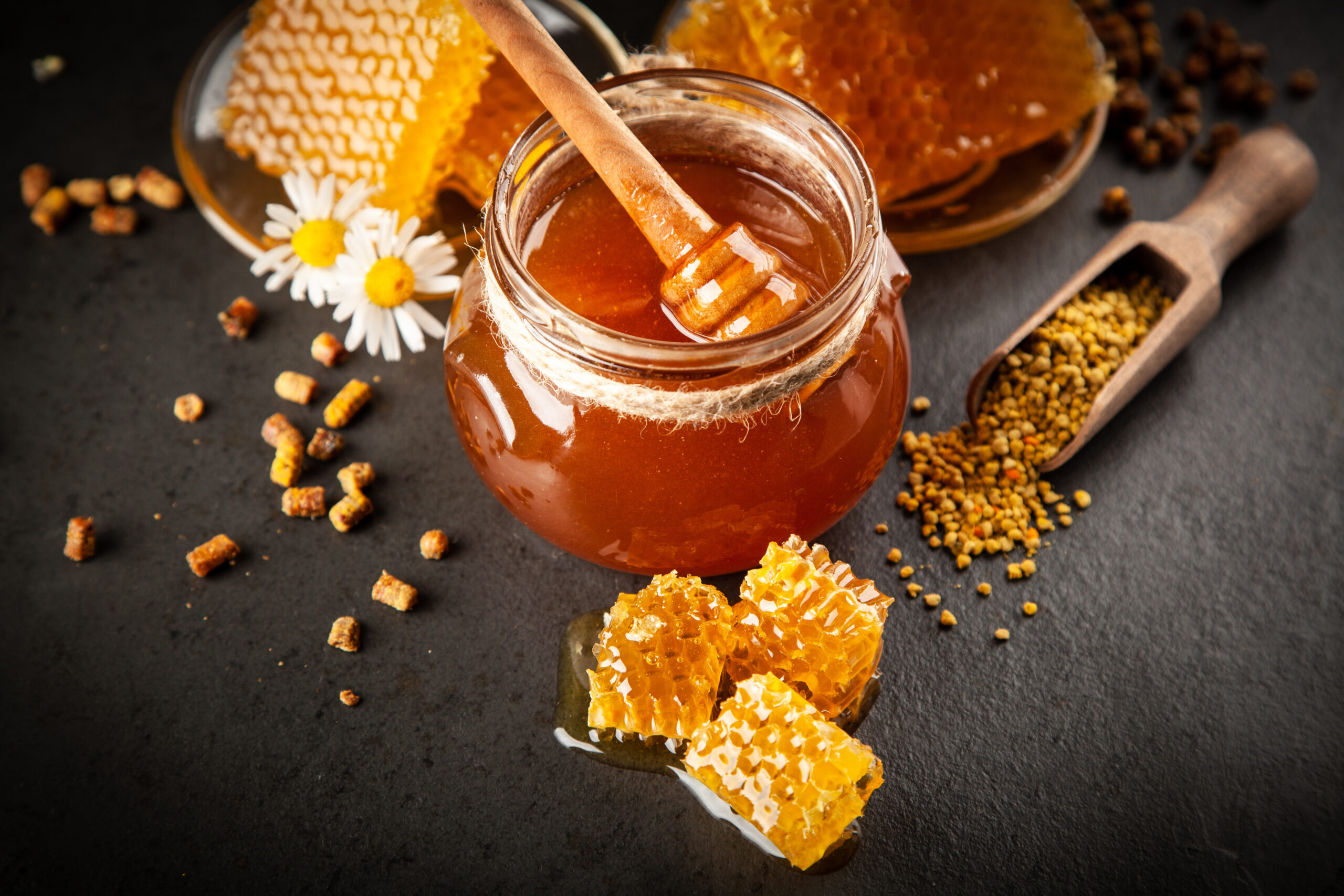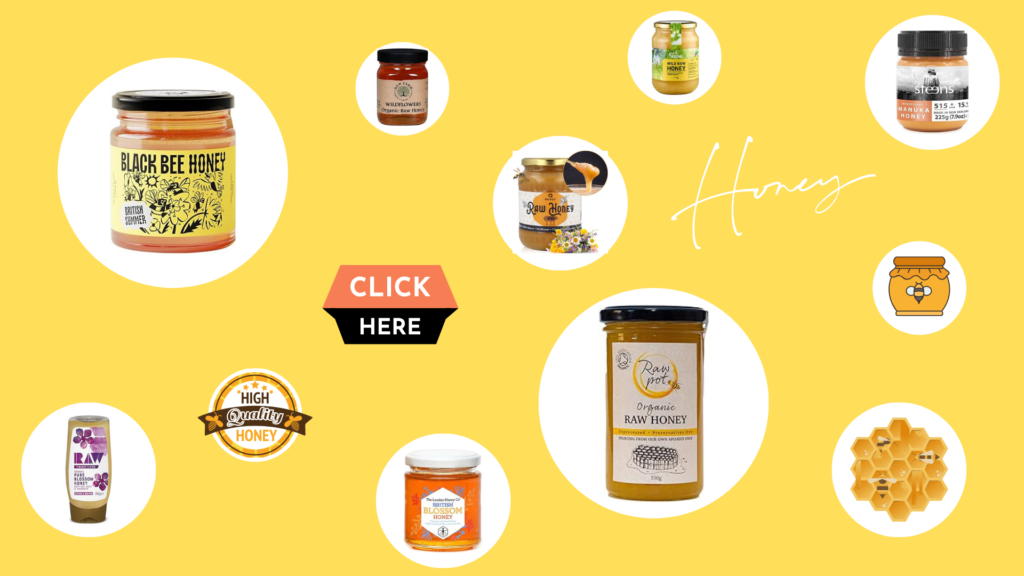Some of the links on this page are affiliate links, which means that Buzzy Kitchen earns commission from purchases made – at absolutely no extra cost to you. Thank you so much for supporting Buzzy Kitchen!
Ah, honey, that sweet nectar produced by bees has been a staple in human diets and medicine cabinets for thousands of years. Its golden hue and sticky sweetness make it a favourite for sweetening teas, drizzling over toast, or even as a natural remedy for ailments. But have you ever found a forgotten jar of honey in the back of your cupboard and wondered, “Does honey go bad?”
In today’s post, we’re diving deep into the world of honey to answer this age-old question. We’ll explore the shelf life of honey, how to store it properly to maximize its freshness, and signs to look for when your honey might have turned. So, whether you’re a honey aficionado or just someone with a sweet tooth, read on to discover the secrets of honey’s longevity and how to ensure you’re enjoying it at its best!
Does Honey Go Bad?
Yes, honey can go bad.
That statement will probably rile up a few people into tapping a furious “you’re wrong!” response, but what I said is 100% correct. Honey can and will go bad in certain circumstances. Things are nowhere near as clear cut as everyone wants to believe they are.
Accredited dietician Elise Mandl at Healthline offers a few very simple reasons why honey can and will go bad, including:
- Incorrect storage
- Age-related degradation
- Filler food materials – sugar syrups, other plant syrups
- Toxic compounds, carried by insects and pollinators
- Contamination from other materials – dust, pollen, dirt, air, etc.
People think that it’s impossible for honey to go bad because of a few different reasons, all of which are true. These include:
- Low moisture content
- High sugar content
- pH level of 3.9, which is acidic
- Naturally present enzymes, including hydrogen peroxide
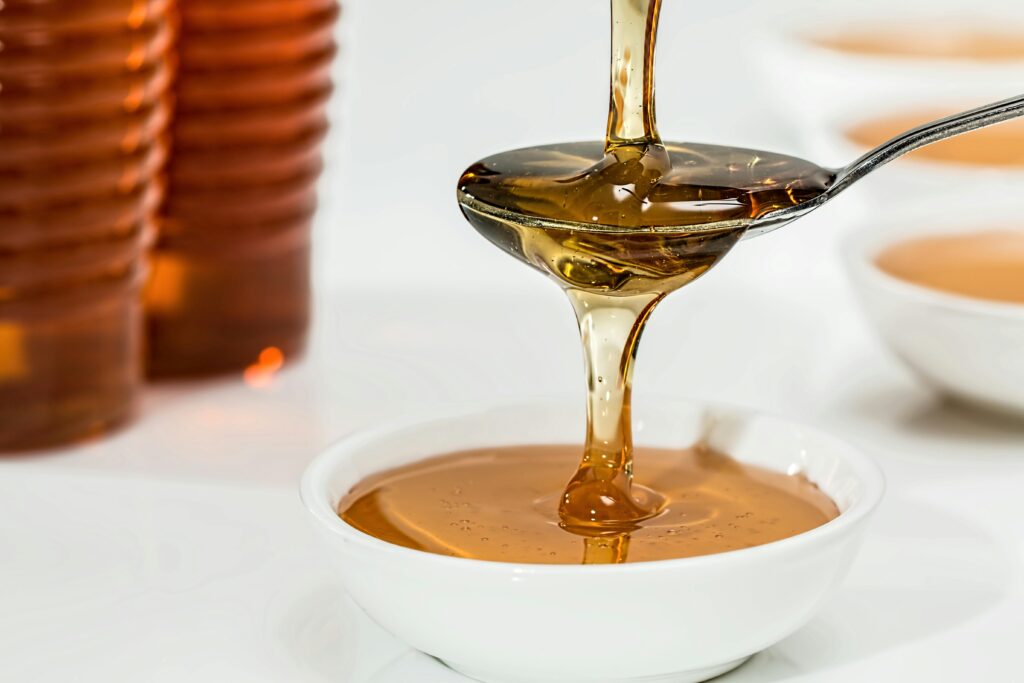
With all of those things combined, honey is naturally completely unsuitable for things like bacteria and mould spores to grow on – but that means 100% natural honey, not contaminated with a single other organism, not touched or harassed by human hands, and with bees that aren’t force fed super sweet ingredients.
The honey you buy in stores is very far removed from that in many, many cases. As soon as a single ingredient or human hand touches it, the not-moulding process is potentially disrupted.
Why Doesn’t Honey Go Bad?
In a perfect world, honey doesn’t go bad because of low moisture, high sugar, acidity, and naturally present enzymes, as previously listed. But let’s dive a little deeper into what those things actually mean.
Low Moisture Content
Bacteria, fungi, and other organisms need some sort of moisture to survive. A lack of moisture to them is exactly the same as a lack of water for us humans, and bees deliberately keep the temperature inside the hive hot enough to evaporate the water out of the honey as a sterilising technique. It’s super clever, right?
The parts of the hive usually reach 35C (95F,) which helps the water in the water-sugar mix heat up and the water starts to evaporate. It is only when enough of the water has evaporated that the honey becomes thick. When enough evaporation has taken place, the small honey storage chamber is sealed up with a door of wax, which prevents more water from escaping and potential contamination.
If the bees didn’t heat up the honey storage part of the hive, the water in the honey would allow for yeast spores and other microorganisms to grow. It would, essentially, go bad in the hive, and the organisms would deplete the honey of its sugar.
High Sugar Content
The majority of microorganisms have a really tough time trying to grow in honey, which is why sealed jars of the sticky stuff have survived thousands of years without going mouldy or otherwise bad.
Dr Sophie Cox and her team of chemical engineers at the University of Birmingham are using the natural antibiotic properties of honey to try and heal wounds. The reason for this is simple: honey is packed with reactive oxygen species, which are natural antibiotics.
The naturally occurring antibiotic microorganisms in honey essentially kill off any potential mould-causing bugs before they even have a chance to start growing.
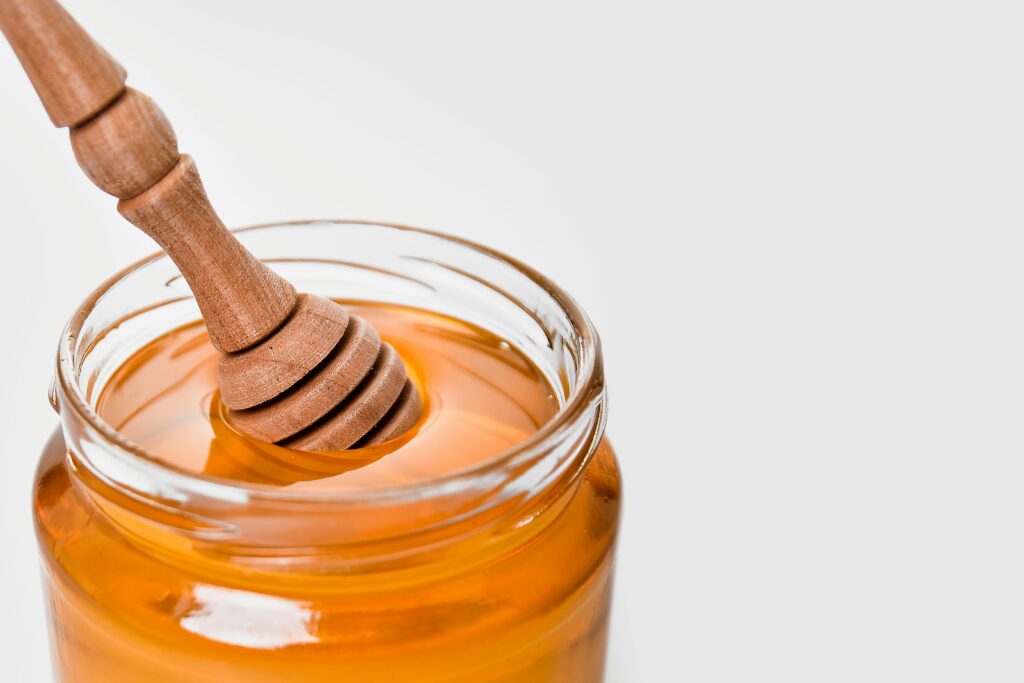
pH Level of 3.9 (Acidic)
According to research, honey has a pH balance that sits somewhere between 3.2 and 4.5, which essentially means that it “dissolves” any potential mould-causing organisms before they arrive, just like honey’s high sugar content.
Salmonella and E. coli both need a pH level of at least 4.0 in order to survive, and most other types of bacteria require an even higher pH level than that.
Naturally Present Enzymes
Science shows that honey contains no fewer than 181 different substances and is often described as a “supersaturated sugar solution.” The most prolific substances are sugars, which make up 82.5% and include fructose, glucose, maltose, trisaccharides, and sucrose.
Other substances include water (17%,) and protein (0.5%.)
Humans have known about the antibacterial nature of honey for millennia, but it’s only with recent advances in technology that we’ve discovered the reasons why. Honey has hydrogen peroxide on its side, which many of us know as a bleaching agent. When the sticky substance is diluted, glucose oxidase is activated, turning into hydrogen peroxide.
How Long Does Honey Last?
Technically, honey has the potential to last forever.
Humans have found honey that is still perfectly okay to eat after literally thousands of years. It’s believed that foraging for honey, also known as honey hunting, goes back at least as far as 8,000 years in our history.
The experts state: “So long as its water concentration does not rise much above 18%, honey has an indefinite shelf life, both within the hive and after its removal.”
Can I Eat 2 Year Expired Honey?
In order to answer this question, I must first ask you one:
Is your jar of honey still sealed?
If it is, your honey is probably absolutely fine to eat. It’ll only have the potential to go bad once it has been opened and exposed to air and moisture.
If the jar of honey has been opened and the seal broken, there’s a chance that the sticky honey has been contaminated.
The kind of container will be important regardless of open or not. A metal container could oxidise the honey on the inside. Where you store the open/unopened container is also important. Direct heat or bright sunlight could cause the honey to change colour and even the taste to change a little. Fermentation could take place, and the honey could get thicker and/or stickier over time.
The best way to avoid those things from happening is to store honey in an airtight container (preferably glass,) avoid storing it in the path of bright sunlight, keep it in a cool place (kitchen cupboard,) and ensure that all cutlery is clean before dunking it in the jar.
How Do You Know When Honey is Bad?
Honey shouldn’t really go bad, as such. If it does, it has been contaminated with something, is of poor quality (super diluted,) or has absorbed a lot of moisture. Usually, these things occur as a result of low-quality during manufacturing or incorrect storage once the product has been taken home.
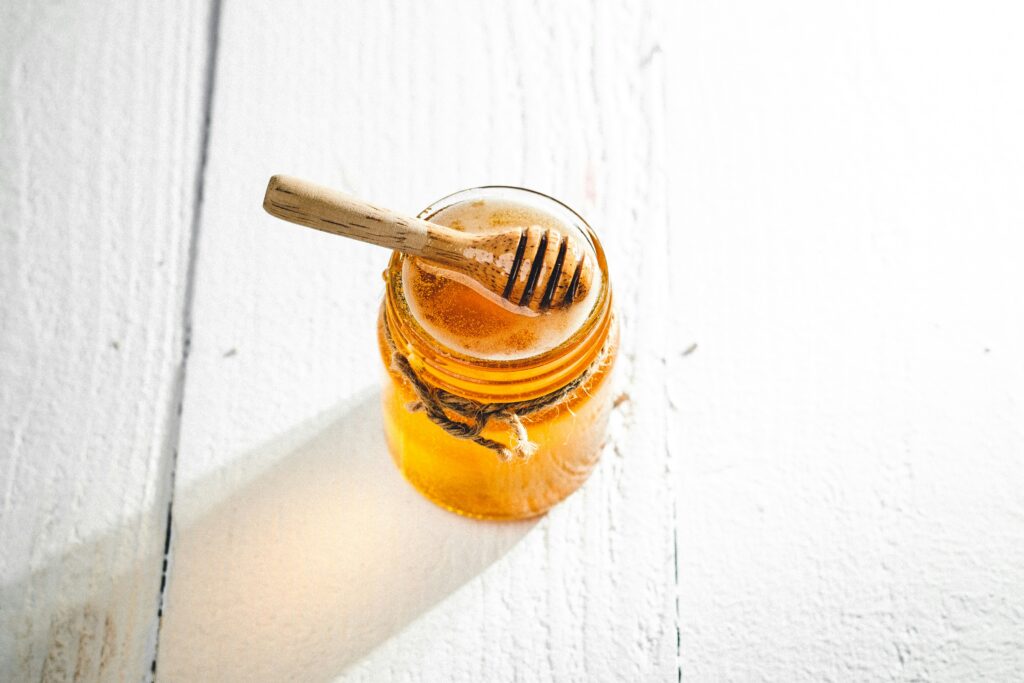
An obvious sign that you shouldn’t consume it (or any other food,) is visible mould growing anywhere on the honey or container. If it smells strange and un-honey-like, I’d suggest giving it a wide berth.
Thickening, changing colour, and even crystallisation is very common with ‘old’ honey, but they aren’t signs that it has gone bad. The honey is still perfectly safe to consume.
Best Way to Store Honey
The absolute best way to store honey is in an airtight, sealed jar. That jar should be placed in a cool, dark place when it’s not being consumed or used in cooking. This prevents it from changing colour or thickening too much due to bright sunlight or hotter temperatures.
Honey is usually sold in glass jars, but these days, plastic squeezy bottles are an accessible option. It’s not recommended to keep either glass or plastic containers in the fridge as the cooler temperatures will cause the honey to thicken and potentially crystallise at a much quicker rate.
Conclusion: Does Honey Go Bad?
In short, yes, honey can go bad in certain circumstances, and it will.
In its most natural and pure form, honey is naturally antibacterial and anti-several other things that would cause food to go bad and make you potentially sick. In all honesty, most store-bought honey lasts for a super long time, especially if you buy all-natural brands or varieties.
At the end of the day, if it looks and smells as it should, the honey should be safe to eat. The best-before or expiry dates on honey is a guideline for supermarkets, particularly for rotating stock.
While you’re here, why not take a peek at these:
